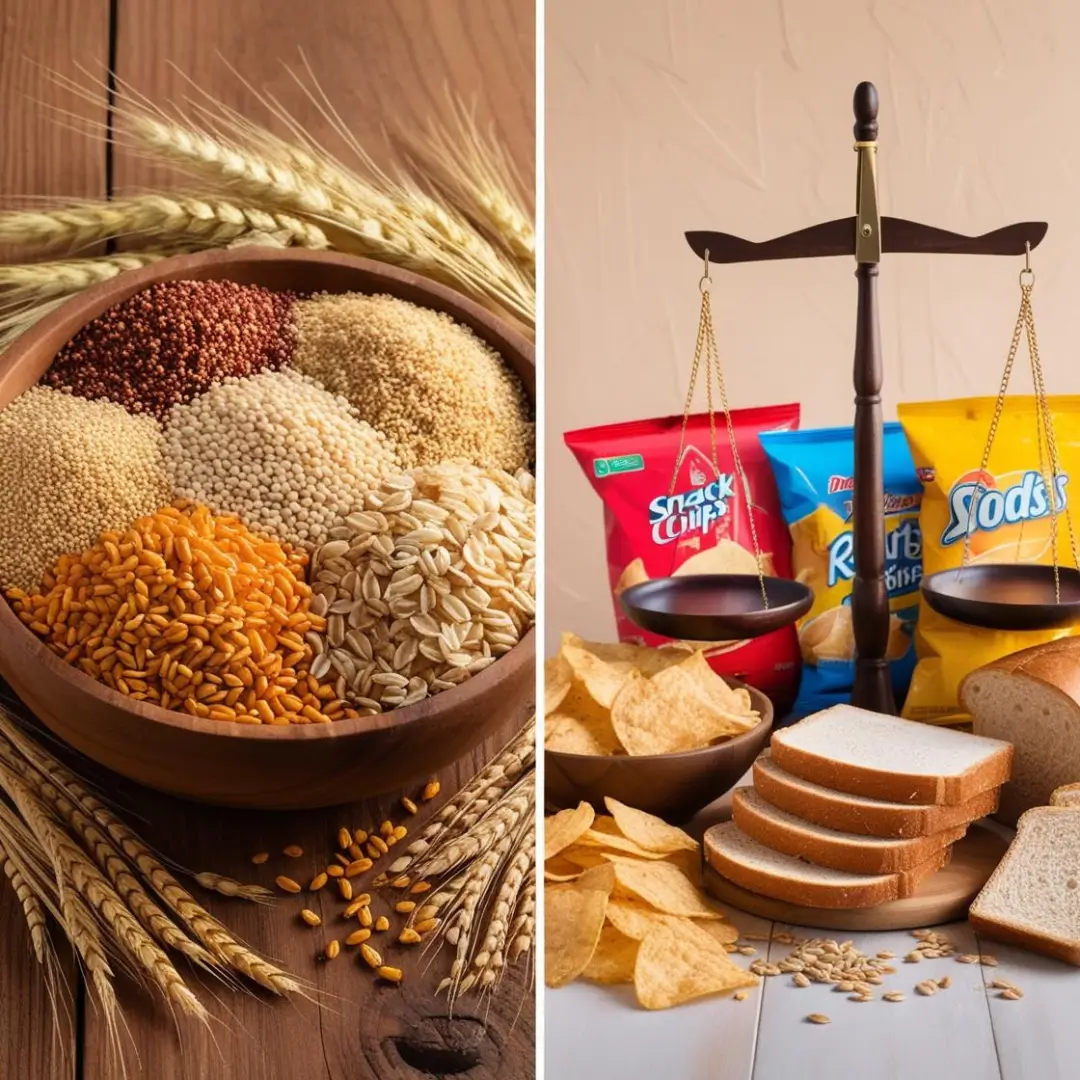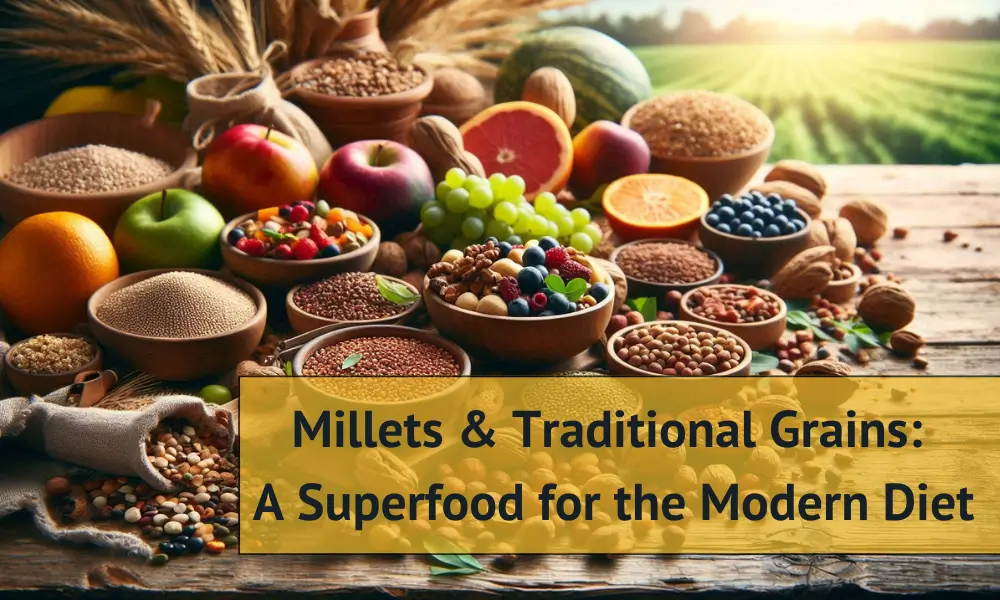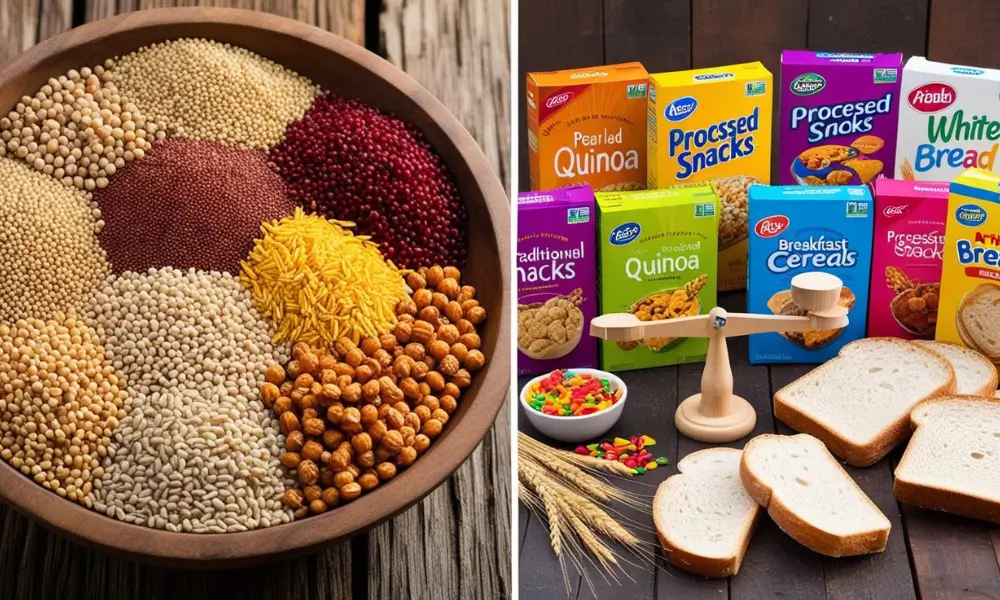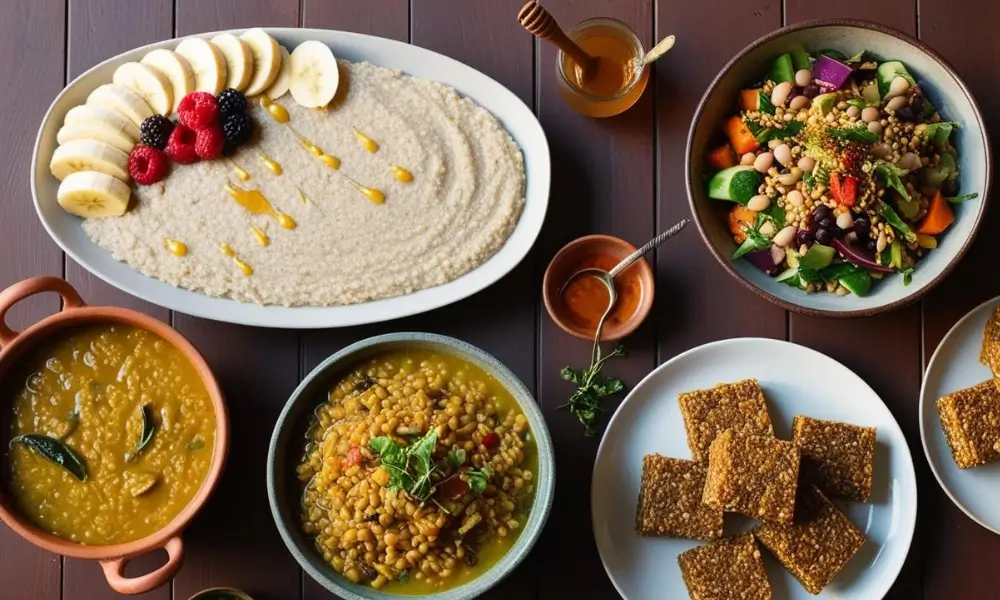Currently Empty: ₹0.00

In today’s fast-paced world, where processed foods dominate our plates, it’s time to take a step back and rediscover the power of traditional grains. Millets, often referred to as “nutri-cereals,” are making a comeback as a superfood for the modern diet. But what makes these tiny grains so special? Let’s dive in and explore why millets and traditional grains deserve a permanent spot in your kitchen.

Why Millets Are a Must-Have for a Healthy Lifestyle
What Are Millets?
Millets are small-seeded grasses that have been cultivated for thousands of years. They were once a staple in ancient diets but were overshadowed by rice and wheat in modern times. However, with the growing awareness of health and sustainability, millets are reclaiming their rightful place on our plates.
Common Types of Millets
- Foxtail Millet: Known for its high fiber content and low glycemic index, making it suitable for diabetics.
- Pearl Millet (Bajra): Rich in iron and known to improve hemoglobin levels.
- Finger Millet (Ragi): Packed with calcium, beneficial for bone health.
- Sorghum (Jowar): Gluten-free and high in antioxidants.
Traditional Grains Around the World
Beyond millets, various cultures have their own traditional grains:
- Quinoa: Native to South America, it’s a complete protein source.
- Amaranth: Used by the Aztecs, rich in protein and micronutrients.
- Teff: An Ethiopian staple, high in iron and calcium.
Nutritional Benefits of Millets
Millets aren’t just versatile; they’re a nutritional powerhouse. Here’s why they’re a must-have for anyone looking to boost their health:
Rich in Fiber
One of the standout features of millets is their high fiber content. Fiber is crucial for digestive health, helping to prevent constipation and promoting a healthy gut. Plus, it keeps you full for longer, making it a great choice for weight management.
Packed with Essential Vitamins and Minerals
Millets are loaded with vitamins like B-complex and minerals such as iron, magnesium, and phosphorus. These nutrients play a vital role in energy production, bone health, and overall well-being.
Gluten-Free and Easy to Digest
For those with gluten intolerance or celiac disease, millets are a godsend. They’re naturally gluten-free and easy to digest, making them a safe and healthy alternative to wheat and other gluten-containing grains.
How Millets Support Weight Management
If you’re looking to shed a few pounds, millets can be your best friend. Their low glycemic index ensures a slow release of sugar into the bloodstream, preventing sudden spikes in blood sugar levels. This helps control cravings and keeps you satiated for longer.
Millets for Heart Health
Heart disease is a leading cause of death worldwide, but millets can help. They’re rich in magnesium, which is known to regulate blood pressure and reduce the risk of heart attacks. Additionally, the antioxidants in millets help combat oxidative stress, a major contributor to heart disease.
Traditional Grains vs. Processed Foods: What’s Better?
The Problem with Processed Foods
Processed foods are convenient, but they come at a cost. They’re often loaded with unhealthy fats, sugars, and artificial additives that can wreak havoc on your health. Regular consumption of processed foods has been linked to obesity, diabetes, and heart disease.

Why Traditional Grains Are Superior
Traditional grains like millets, quinoa, and barley are far superior to processed foods. Here’s why:
Nutrient Density
Traditional grains are nutrient-dense, meaning they provide more nutrients per calorie compared to processed foods. They’re rich in vitamins, minerals, and antioxidants that support overall health.
Sustainability and Environmental Impact
Millets and other traditional grains are environmentally friendly. They require less water and are more resilient to harsh weather conditions compared to crops like rice and wheat. By choosing traditional grains, you’re not just benefiting your health but also contributing to a more sustainable planet.
How to Incorporate Traditional Grains into Your Diet
Switching to traditional grains doesn’t have to be complicated. Start by replacing refined grains with whole grains like millets, quinoa, or barley. You can also experiment with health mix powder, a blend of roasted millets and other traditional grains, to make nutritious porridges or smoothies.
Easy Millet-Based Recipes for Every Meal
Breakfast: Millet Porridge with Fruits
Start your day with a hearty bowl of millet porridge. Cook millets with milk or water, add a dash of honey, and top it with fresh fruits like bananas, berries, or apples. It’s a delicious and nutritious way to kickstart your morning.

Lunch: Millet Salad Bowl
For a light yet filling lunch, try a millet salad bowl. Cook millets and toss them with chopped veggies, beans, and a tangy dressing. You can also add some roasted nuts for an extra crunch.
Dinner: Millet Khichdi
Millet khichdi is a comforting one-pot meal that’s perfect for dinner. Cook millets with lentils, vegetables, and spices for a wholesome and satisfying dish. It’s easy to digest and packed with nutrients.
Snack: Millet Energy Bars
Need a quick snack? Whip up some millet energy bars. Mix cooked millets with nuts, seeds, and dried fruits, then bake until firm. These bars are perfect for on-the-go snacking and provide a steady energy boost.
Embrace Millets for a Healthier Tomorrow
Millets and traditional grains are more than just a trend; they’re a return to our roots. With their incredible nutritional profile and versatility, they offer a simple yet effective way to improve your health. Whether you’re looking to manage your weight, boost your heart health, or simply eat cleaner, millets are the answer. So, why not give them a try? Your body—and the planet—will thank you.
By incorporating millets into your diet and experimenting with recipes, you’re not just eating healthier; you’re also supporting sustainable agriculture. So, go ahead, embrace millets, and take a step toward a healthier, happier you!

